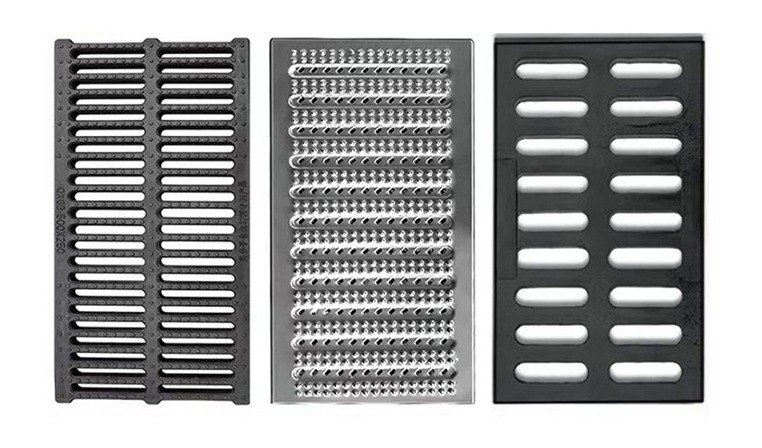V-Shaped HDPE Building Materials Pipe Plastic Drainage Ditch
Cat: Plastic Drain Channel
The V-shaped HDPE building material pipeline plastic drainage trench represents a significant innovation in drainage technology, tailored to meet...
See DetailsOutdoor spaces—whether gardens, patios, driveways, poolsides, or walkways—face exposure to rain, leaves, dirt, construction debris, and foot or vehicle traffic. Without proper protection, drainage channels can clog, degrade, or even become safety hazards. A Drain Channel Cover acts like a shield: it prevents large debris from entering, supports load (depending on material), and helps maintain aesthetic continuity.
By combining a well-designed Plastic Drainage System and suitable Drain Channel Covers, you not only manage water flow effectively but also protect your system and surroundings over time.
Why Drain Channel Covers Matter
Preventing Debris Ingress & Blockage
One of the more direct benefits of using drain channel covers outdoors is debris prevention. Leaves, twigs, gravel, and construction dust can easily block open channels. Blocked channels slow water flow, cause overflow, or force water to take unwanted paths. With a proper Drain Channel Cover, you limit the entry of such materials while still allowing water to pass through.
A study on drain coverings highlights that one of the primary motivations to cover drains is “to minimize the adverse impact of a polluted drain” and reduce clogging risks.
Enhanced Safety & Accessibility
Open drainage channels in outdoor spaces can be tripping hazards—especially in low-light or for children, pets, or elderly users. A sturdy Drain Channel Cover gives a flat, safe walking surface. Installing covers is also important in driveways or vehicular paths to prevent damage or accidents.
Beyond safety, covers make the system more accessible for inspection: many covers are removable, enabling easier cleaning and servicing.
Longevity & Structural Protection
Outdoor environments subject drainage systems to weather, freeze-thaw cycles, mechanical loads, and UV radiation. A good Drain Channel Cover adds a protective layer that reduces wear, shields the channel walls from direct impact, and helps maintain structural integrity. In conjunction with a Plastic Drainage System, which itself is more corrosion-resistant than metals, the cover prolongs overall lifespan.

Choosing the Right Drain Channel Cover for Outdoor Use
To get all these benefits, selecting the right cover is key. Here are the main aspects to look at:
Material & Strength
Covers come in various materials—plastic, composite, polymer concrete, metal, FRP, etc. For outdoor spaces paired with plastic drainage systems, many opt for plastic or composite covers (depending on load). However, plastic covers might have lower load-bearing capacity compared to metal or composite covers.
If vehicles or heavier loads cross over the drainage lines (e.g. in driveways), you’ll need covers rated for higher loads. Conversely, for garden paths or pedestrian areas, lighter covers suffice.
Slotted vs Grated vs Solid
Slotted covers: narrow slots that let water in but block larger debris.
Grated covers: open grating for higher flow but may also admit more debris.
Solid covers with drainage apertures: more decorative, sometimes used where you want to limit exposure.
Choose based on balance between water flow and debris exclusion.
Ease of Removal & Maintenance
Covers should be removable (or hinged) to allow access for cleaning channel interiors. If removal is difficult, maintenance becomes cumbersome, defeating the purpose of the cover. Look for designs with lifting holes, handles, or snap-in mechanisms.
UV, Weather & Chemical Resistance
Outdoor covers must resist UV degradation, temperature cycles, and possibly chemical exposure (fertilizers, salts). Look for UV-stabilized polymers or composite blends that maintain strength under sunlight.
Aesthetic & Integration
Because the cover is visible, aesthetics matter in outdoor spaces. Covers in neutral colors or matching landscaping elements blend visually. Some covers even allow turf or stone inserts to conceal them.
It would be great to hear from you!